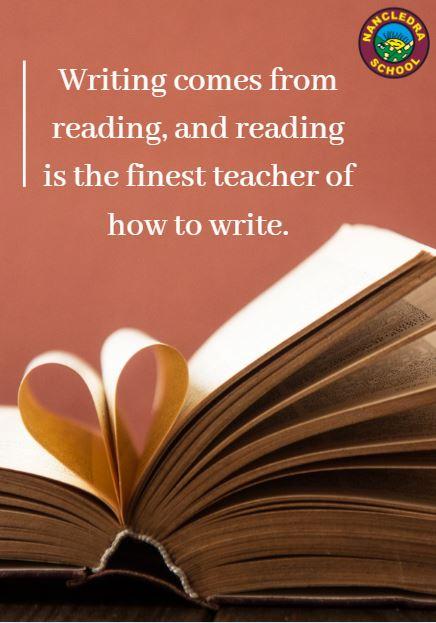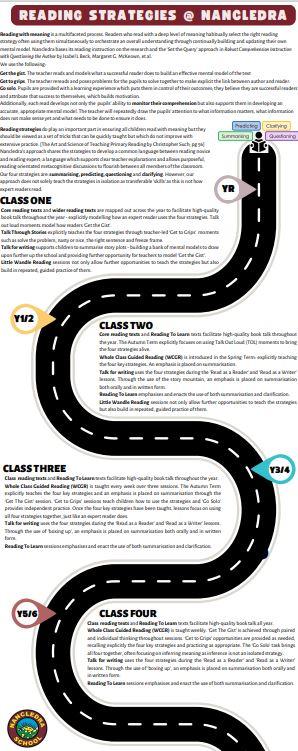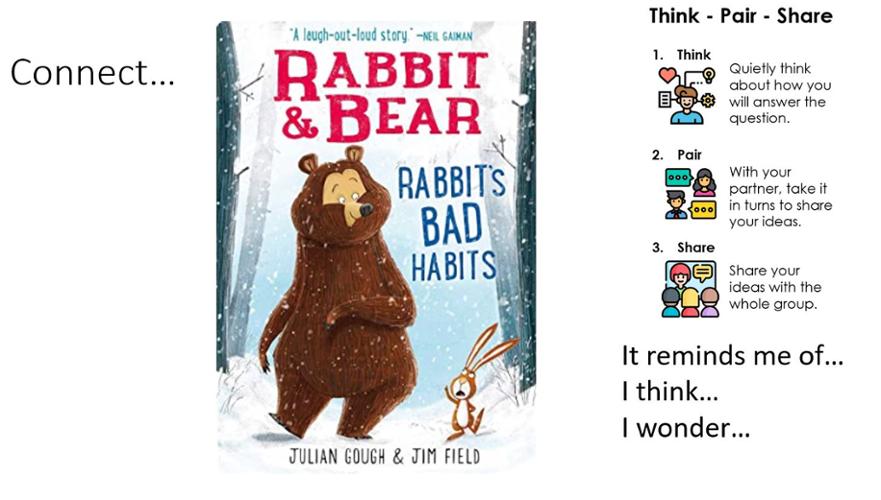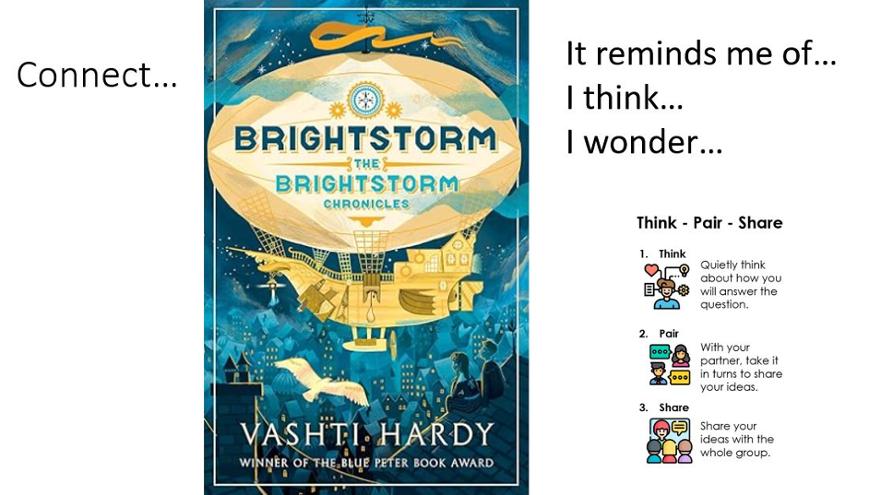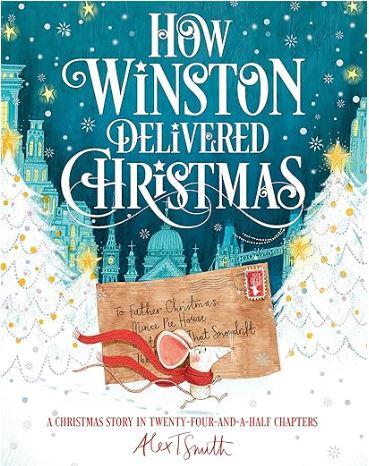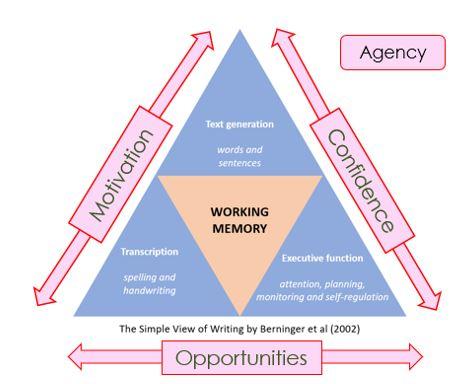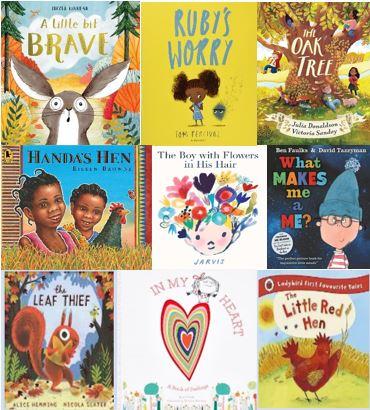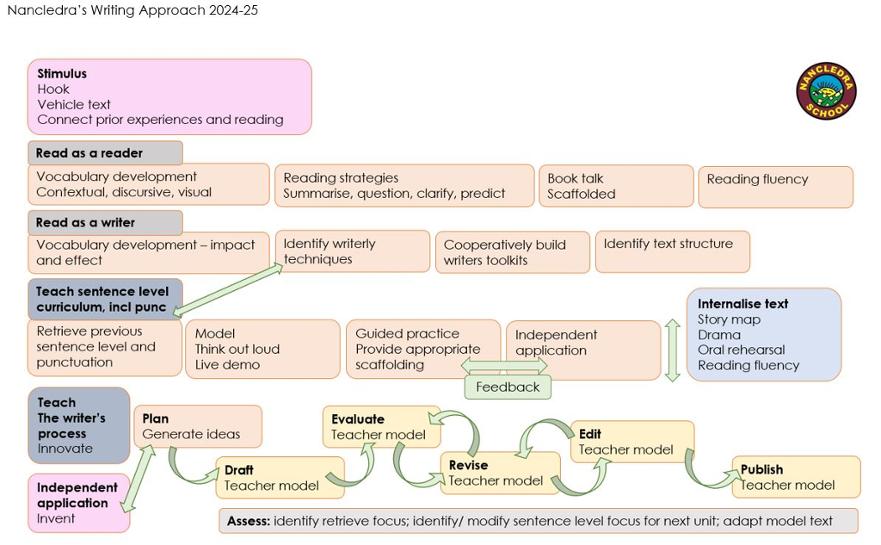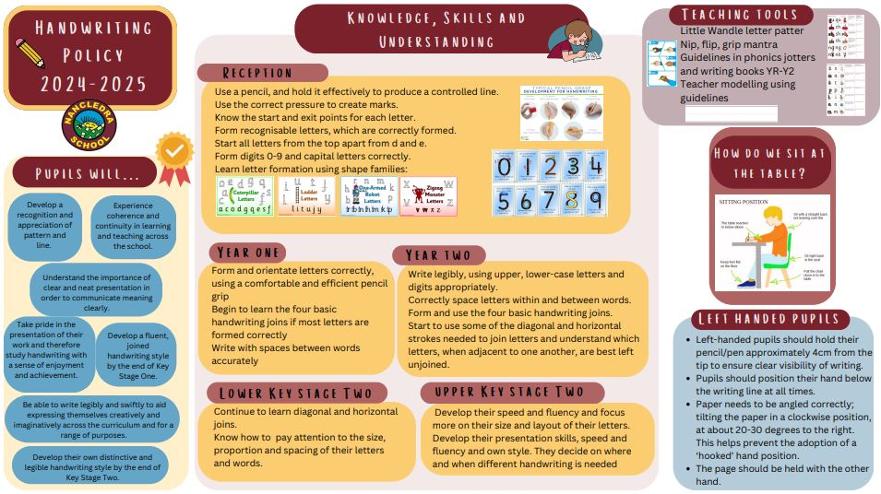English
At Nancledra School, English and the teaching of English is the foundation of our curriculum. Our main aim is to ensure every single child becomes primary literate and progresses in the areas of reading, writing, speaking and listening.
English at Nancledra will not only be a daily discrete lesson, but is at the cornerstone of the entire curriculum. It is embedded within all our lessons and we strive for a high level of English for all. Through using high-quality texts; immersing children in vocabulary rich learning environments and setting hig-expectations supported with expert, explicit teaching of writing skills, the children at Nancledra will be taught how to read with deep meaning, write to entertain and inform and how to speak and listen with clarity and purpose. This will ensure no door is closed to them and every available opportunity is within their grasp.
PHONICS
Nancledra School uses a systematic scheme to teach Phonics and Early Reading. Use the link below to visit the parent's information pages, which include resources and videos.
For parents | Letters and Sounds (littlewandlelettersandsounds.org.uk)
Click below to see the progression of phonics taught in Reception and year 1.
|
|
Programme-Overview Reception-and-Year-1 | [pdf 546KB] |
|
Reading
Reading is a key tool for life. Teaching children to become excellent readers, who choose to read, is a large part of what we do at Nancledra.
At Nancledra, it is our intention to ensure pupils are able to read fluently, with deep meaning and confidently across a range of subjects, developing a love of reading and books and preparing them for the next stage of their education.
We encourage all pupils to read widely across both fiction, non-fiction and poetry.
Click on the link below to see our intent with regards to reading:
- The Nancledra Reading spine
- Reading Strategies @ Nancledra
- Reading beyond phonics @ Nancledra School
- Example overviews for Whole Class Guided Reading (WCGR): Class Two and Class Three
- Example lessons from Class Two and Class Three.
Cosy Up And Read!
We strive to create a reading community here at Nancldra and one of the ways in which we do this is thorugh our cosy up and Read bags. Every week a child is chosen to take home their Year Group's cosy Up And Read bag.It is full of a carefully curated selection of texts, including graphic novels, fiction and non-fiction. There is a reading journal for children to respond to the stories thay have read and also, perhaps most importantly, a sachet of hot chocolate and a portion of marshmallows for the top. A good book and a nice warm drink are the perfect combination for enjoying a book with your child, plus the childrne love to chat about the books they enjoyed, comparing who had which favourite - lots of good book chat!
Nancledra's Advent Calendar Story 2024
Every day until Christmas Day 2024, a chapter of Alex T. Smith's Christmas story will be read here on this page - see the links below. The book is called How Winston Delivered Christmas and has a little something special about it.
Without giving too much away, Winston is a mouse who finds a Father Christmas letter that has not quite made it to the North Pole. You'll have to listen to the chapters to find out what happens! And the something special is that every chapter has a fabulous craft idea linked to the story - simple finger puppets, snow globes, letters, and decorations. We hope you enjoy listening to it as you count the days until Christmas!
December 25th - head over to you Seesaw account!
December 24th - head over to your Seesaw account!
December 23rd - head over to your Seesaw account!
December 19th - chapter 19 part two
December 19th - chapter 19 part one
December 16th - chapter 16 part two
December 16th - chapter 16 part one
December 14th - chapter 14 part two
Our Writing Approach
Our writing curriuclum is based upon the Simple View of Writing (Berninger et al, 2002) in which there are three types of skills all limited by working memory capacities: transcription, text generation, and self-regulation. In addition to this simple view of writing, we also recognise the importance of children's agency in developing as writers and have therefore included motivation, confidence and opportunities as key elements within our teaching of writing.
At Nancledra we recognise that the primary school years are a critical period when children learn and develop the key foundational skills necessary for writing: transcription skills (i.e., handwriting and spelling), language, cognition, and reading skills. Therefore, we have built our own writing instruction approach which prioritises the key foundational skills needed to enable our children become confident, skilled and motivated writers.
Throughout the early years and key stage one the weighting of our writing instruction sits with transcription skills and spelling. We particular focus on building handwriting fluency as studies show that handwriting fluency has a large effect on writing quality (0.84; Santangelo & Graham, 2016) and we need our children’s handwriting skills to allow them to keep up with their writing ideas.
Although it seems like composition gets the least attention in our Early Years writing curriuclum, in real terms, composition permeates every aspect of it, but mostly through speaking and oracy. Therefore, before they are expected to write a whole narrative, our children have plenty of opportunities to acquire a solid understanding and knowledge foundation of the written form and the tasks performed by an expert writer (such as planning, editing, and revising).
We use the following approaches:
- Talk Through Stories
- Talk For Writing
- Poetry Time
- Nursery rhymes
- Explicit teaching of vocabulary in context and through discussion
- Engaging, high-quality conversations
- Playful interactions
The emphasis of our curriculum transitions to written composition once our children have mastered the fundamental skills. We have created a meticulous word, sentence, punctuation, and text objective led curriculum to make sure we do not cognitively overload our children and that we also effectively establish schemas to ensure new learning sticks. This ensures that we are teaching age-appropriate material, enables our curriculum to build cumulatively on prior learning, and allows our children to revisit fundamental objectives until they become secure and automatic.
In Key Stage Two our writing curriculum is based on the Talk For Writing principles: imitate, innovate and invent. In addition to this we ensure we read as readers and writers; explicitly teach the writerly process such as planning, revising, evaluating etc; and also motivate, inspire and celebrate our children as writers.
Nancledra Writing Curriculum overviews
Handwriting
Writing can slow if the ideas and words are not generated, but the act of composition needs to be supported by effortless, legible handwriting. We believe that specific feedback and explicit instruction, in addition to plentiful practice (often guided), are all needed to ensure all our children are proud of their written pieces. Please read our handwriting policy to find out more:
